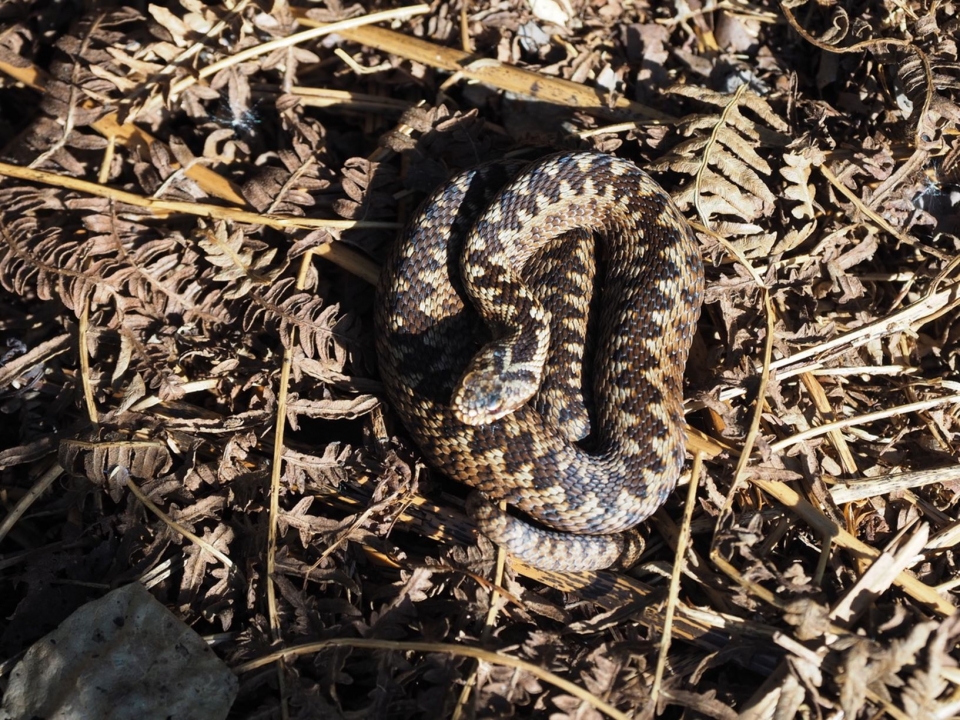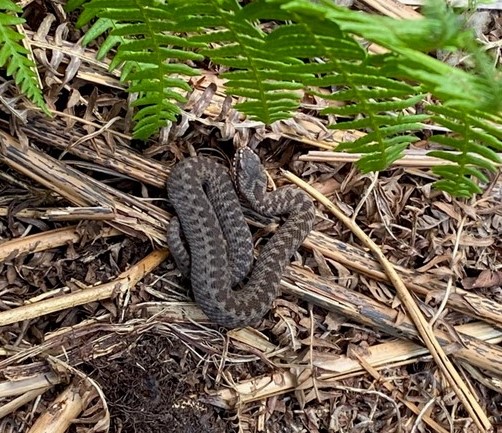Finding reptiles – survey update
David Dewsbury, our Reptiles Project Leader, has been busy in recent weeks completing ‘reptile transect surveys’ – with his team of volunteers - and has provided this revealing update for us sharing what they found.
The reptile transect surveys involve checking various sites in the Forest where the project team has installed small ‘transects’. The transects consist of small ‘onduline’ sheets (approx.. 1 metre square) laid where reptiles are most likely to shelter under the sheets.
The carefully sited transects are helping create a sustainable network of habitat favourable to reptiles, providing refuge for our four common reptiles species into the future. These species include slow worm, adder, common lizard and grass snake.
These photos David has shared with us are wonderful to see, not least because these reptile species are notoriously elusive and difficult to capture in a photograph!
David says:

 “We found last year’s (2020) baby adder (right image) in a slightly different place at Lower Milkwall and also two of the previous year’s adders which are still popping up under the sheets. We also found a grass snake and large adder at Gorsty Knoll, a large female adder at Mallard’s Pike. They were nearly too quick for my camera! The lizard (main image above) was ignoring our refuges.”
“We found last year’s (2020) baby adder (right image) in a slightly different place at Lower Milkwall and also two of the previous year’s adders which are still popping up under the sheets. We also found a grass snake and large adder at Gorsty Knoll, a large female adder at Mallard’s Pike. They were nearly too quick for my camera! The lizard (main image above) was ignoring our refuges.”
The team hope that the transects they have cleared of over-grown vegetation whilst completing their surveys, in particular trying to clear some bracken where possible, will attract a few reptiles now the sun can get in. However, they did report that thickly over-grown bracken is quite a challenge in the Forest at this time of year; a challenge to surveyors trying to reach the transects as it makes them difficult to find, and equally the reptiles have less incentive to make their way under the transect tins to warm up.

 Most of the volunteers have reported seeing slow worms, frogs and toads when they carefully lifted the transect felts to see what was sheltering underneath.
Most of the volunteers have reported seeing slow worms, frogs and toads when they carefully lifted the transect felts to see what was sheltering underneath.
Numbers of species found varied, ranging from 0-3 creatures under each sheet.
This reptile survey data the project is collecting is also submitted to ‘Living Record’, an online wildlife reporting scheme.